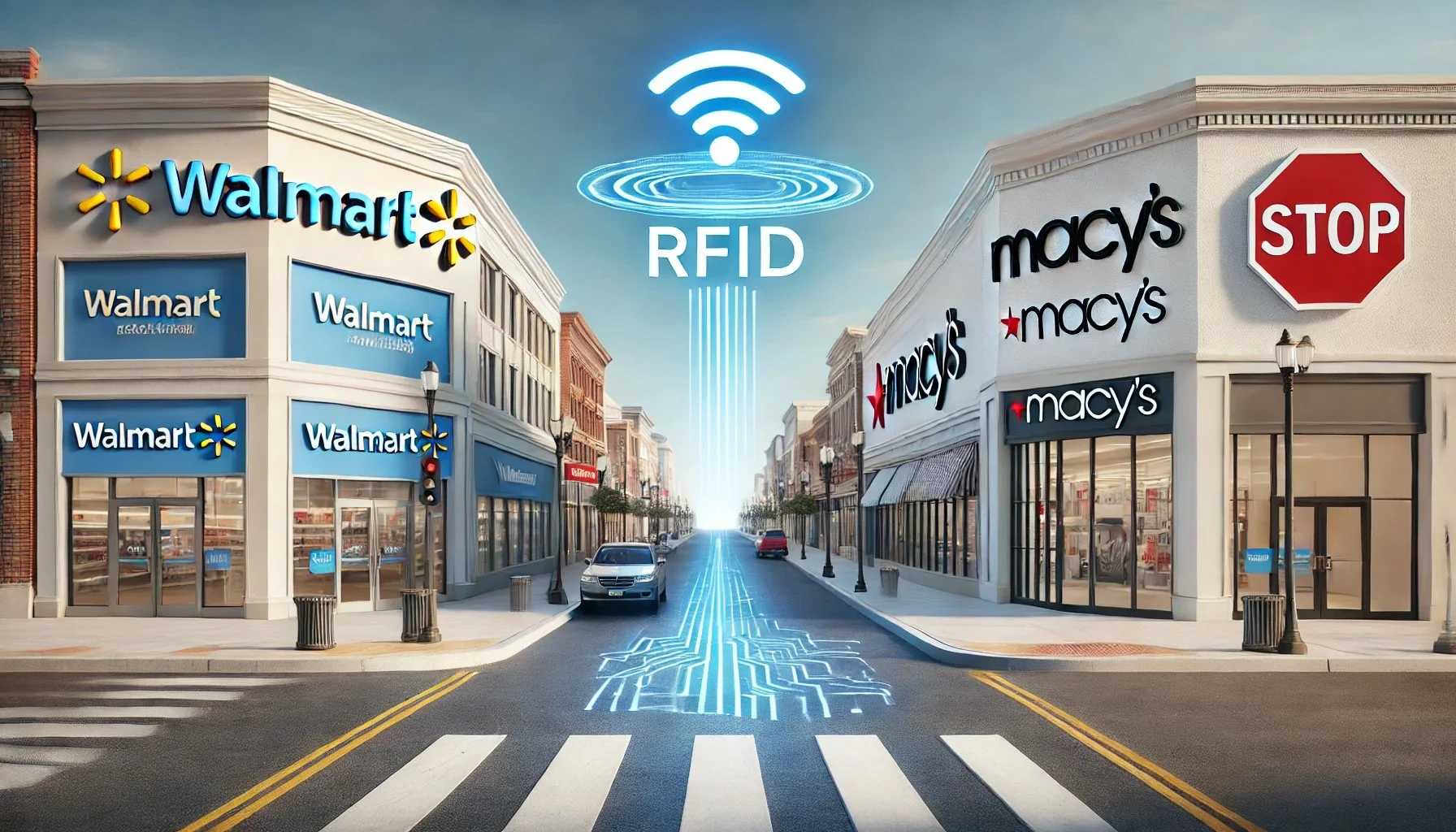Macy’s and Walmart have both implemented RFID…
As organized retail crime continues to surge across the United States, major retailers are increasingly turning to radio-frequency identification (RFID) technology as a sophisticated weapon in their loss prevention arsenal. While RFID tags were initially adopted for inventory management, retailers like Macy's and Walmart are discovering their powerful potential for combating theft and securing merchandise.
The Rise of Organized Retail Crime
According to the National Retail Federation, nearly two-thirds (64%) of loss prevention professionals report that organized retail crime has become a higher priority for their companies over the past five years. This surge in sophisticated theft operations has pushed retailers to seek more advanced technological solutions beyond traditional security measures.
How RFID Enhances Security
Unlike traditional security tags, RFID technology offers several unique advantages for loss prevention:
Real-Time Tracking
RFID-enabled "smart exits" can detect when tagged merchandise leaves the store, providing immediate alerts to security personnel. The technology works without direct line of sight, making it harder for thieves to circumvent detection.
Detailed Intelligence
When theft occurs, RFID tags provide detailed information about:
Exact items stolen
Quantity taken
Time of theft
Location within store
Product details (SKU, size, color, etc.)
This granular data helps retailers and law enforcement build stronger cases against organized retail crime rings.
Macy's Success Story
Macy's has emerged as a leader in leveraging RFID for loss prevention. After implementing RFID infrastructure in 2013, the retailer discovered its value for security applications. Joe Coll, Macy's vice president of asset protection, notes that "RFID plays a huge part for us from an investigative standpoint."
The company uses the technology to:
Monitor high-risk merchandise
Identify vulnerable store locations
Track seasonal theft patterns
Detect employee theft
One surprising discovery: winter coats were being heavily targeted in late summer and early fall, allowing Macy's to adjust security measures seasonally.
Implementation Challenges
While RFID shows promise for loss prevention, retailers face several challenges:
Cost Considerations
Initial infrastructure investment
Ongoing tag expenses
Training requirements
System maintenance
Technical Requirements
Power over Ethernet (POE) installation
Integration with existing security systems
Regular security updates
Staff training on new technology
The Future of Retail Security
As RFID technology becomes more affordable and sophisticated, its role in retail security is likely to expand. Walmart's recent mandate requiring suppliers to implement RFID tags across multiple departments signals a broader industry shift toward this technology.
Industry experts predict several emerging applications:
Integration with AI for predictive theft prevention
Enhanced coordination with law enforcement
Improved supply chain security
Multi-store theft pattern analysis
Best Practices for Implementation
Retailers considering RFID for loss prevention should:
Start with high-risk merchandise categories
Ensure proper tag placement and encoding
Train staff on system capabilities and procedures
Regularly analyze data to identify patterns
Coordinate with local law enforcement
Maintain robust security protocols
While RFID technology won't prevent all theft, it provides retailers with powerful tools for detection, investigation, and prevention of organized retail crime. As the technology continues to evolve, it's likely to become an increasingly central component of retail security strategies.
This article is based on industry reports and public statements from major retailers. Implementation details may vary by organization.


